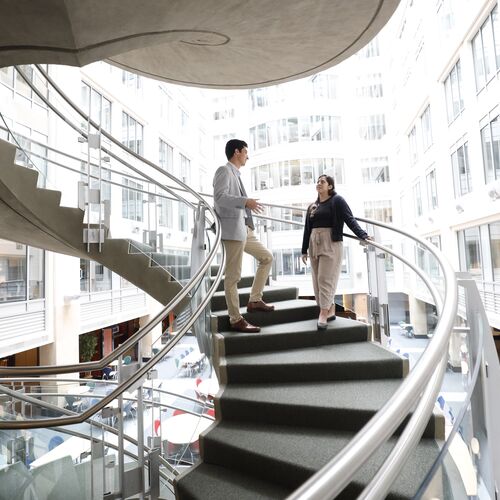Decadal Survey on Astronomy and Astrophysics 2020 (Astro2020)
What are the key scientific challenges for astronomy and astrophysics in the next decade? Pathways to Discovery in Astronomy and Astrophysics for the 2020s identifies the most compelling science goals and presents an ambitious program of ground- and space-based activities for future investment. The report recommends critical near-term actions to support the foundations of the profession as well as the technologies and tools needed to carry out the science.
Learn more by exploring the Interactive Report Overview.
Download the Public Briefing slides (PDF) from November 4, 2021.
Completed
Description
Statement of Task
The National Academies of Sciences, Engineering, and Medicine shall convene an ad hoc survey committee and supporting study panels to carry out a decadal survey in astronomy and astrophysics. The study will generate consensus recommendations to implement a comprehensive strategy and vision for a decade of transformative science at the frontiers of astronomy and astrophysics. The committee, with inputs from study panels covering the breadth of astronomy and astrophysics, will carry out the following tasks:
- Provide an overview of the current state of astronomy and astrophysics science, and technology research in support of that science, with connections to other scientific areas where appropriate;
- Identify the most compelling science challenges and frontiers in astronomy and astrophysics, which shall motivate the committee’s strategy for the future;
- Develop a comprehensive research strategy to advance the frontiers of astronomy and astrophysics for the period 2022-2032 that will include identifying, recommending, and ranking the highest priority research activities — taking into account for each activity the scientific case, international and private landscape, timing, cost category and cost risk, as well as technical readiness, technical risk, and opportunities for partnerships. The strategy should be balanced, by considering large, medium, and small activities for both ground and space. (Activities include any project, telescope, facility, experiment, mission, or research program of sufficient scope to be identified separately in the final report.) For each recommended activity the committee will lay out the principal science objectives and activity capabilities, including assumed or recommended activity lifetime, where possible;
- Utilize and recommend decision rules, where appropriate, for the comprehensive research strategy that can accommodate significant but reasonable deviations in the projected budget or changes in urgency precipitated by new discoveries or unanticipated competitive activities;
- Assess the state of the profession, using information available externally and, if necessary, data gathered by the study itself, including workforce and demographic issues in the field. Identify areas of concern and importance to the community raised by this assessment in service of the future vitality and capability of the astronomy and astrophysics work force. Where possible, provide specific, actionable and practical recommendations to the agencies and community to address these areas. This report shall be made available following the completion of the study.

Collaborators
Committee
Co-Chair
Co-Chair
Member
Member
Member
Member
Member
Member
Member
Member
Member
Member
Member
Member
Member
Member
Member
Member
Member
Member
Committee Membership Roster Comments
5/20/19 First posting. 5/30/19 Received acceptances and added two members (Dalcanton and Turner).
Sponsors
Department of Energy
Department of the Air Force
NASA
National Science Foundation
Staff
Colleen Hartman